Learning how to calm a hyperactive dog is a skill that many dog trainers learn early on — but it’s not easy.
Do you just try to exhaust the dog, and run the risk of creating an endurance super-athlete? Or do you just lock the dog away and hope they get better when they’re older? Will hiring a dogwalker fix it? What’s an owner to do?
We’ll answer these questions and try to provide some tips for encouraging calm behavior in your pooch below!
How to Calm a Hyper Dog and Reduce Hyperactive Behavior: Key Takeaways
- Dogs with high energy or arousal levels often present challenges for pet parents. Even if you’re a marathon runner or weekend adventurer, you’ll want your high-octane pooch to have good manners to make your daily life easier.
- There is a difference between dogs with high energy levels and high arousal levels. Dogs with high energy levels are the athletes of the canine world, who are almost always ready to rock. By contrast, high arousal levels in dogs are generally temporary states and don’t necessarily relate to a dog’s energy level.
- Owners can implement a number of training and management techniques to quell unwanted behaviors and encourage calmness. Providing more exercise and mental stimulation often helps, but you can also try some training games to teach your dog to relax.
High Energy vs High Arousal: What’s the Difference and Does It Matter?
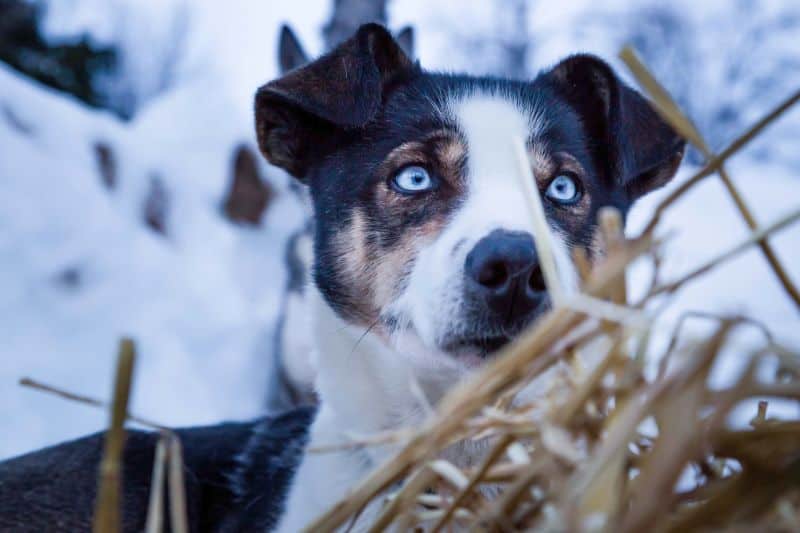
Before we start explaining how to calm behavior in your hyperactive dog, let’s get some terminology straight. Not all dogs with boundless energy are rude, pushy creatures. And not all dogs that are rude and pushy are super-athletes.
Highly Aroused Dogs
Highly aroused dogs are just that — they’re over-aroused by stimuli that other dogs would take in stride. It’s not a permanent state of being, it’s just shorthand for what these dogs are doing at a point in time.
Highly aroused dogs often have a wild, almost panicked look in their eye; they’re over the top and out of control. These dogs aren’t able to think through their excitement.
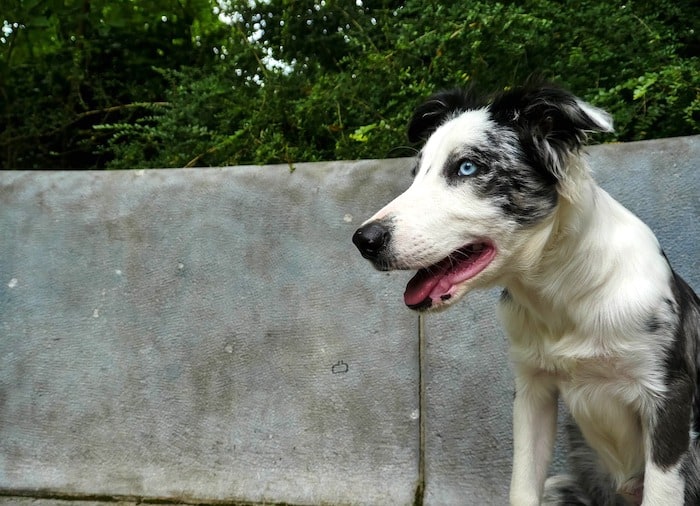
Bella, the dog described at the beginning of the article, exemplified this perfectly in the shelter.
Dogs exhibiting high arousal levels often exhibit one of more of the following behaviors:
- Running around at top speed
- Barking incessantly
- Mouthing people’s hands or clothing (sometimes with force or tugging)
- Jumping at people
- Scratching people as they jump up
- Knocking children or other dogs over
- Slamming into people or “pop” off of them as if they were launching pads
- Grabbing onto their leash to play tug of war
In the shelter, we often call this “kennel crazy” as it often gets worse over time with a lack of outlets. In the home, these dogs can be very hard to handle and not very fun to be around.
These dogs don’t always display high energy levels — they might go absolutely crazy for just a few minutes, and then be exhausted. However, high energy dogs are at a larger risk of developing high arousal levels too. These traits often exist hand in hand.
Dogs are at a risk of becoming high arousal when:
They’re not given enough exercise for their breed, age, and personality.
They were never taught basic obedience cues.
They are deprived of social interaction.
They are exposed to a situation that’s far too exciting for them.
These are the dog’s we’ll focus on today, because they’re the troublemakers. Many high energy dogs are apt to become highly aroused, but it’s not a 1:1 relationship.
High Energy Dogs
High energy dogs have a ton of energy. These dogs may still be polite, but they’re athletes.
My border collie is a high-energy dog. We’ll run 19 miles, come home, take a nap, and I’ll wake up to a plush toy on my chest, a wagging tail, and an eager look. He’s always ready for more.
High energy dogs:
- Are often very fit four-footers.
- Are often “working” breeds that were bred to be out and doing physical activity all day (think Labrador retrievers, German shepherds, Australian shepherds, and border collies).
- Can go, go, GO! These dogs are able to run, then play frisbee, then go swimming, then come home and play tug all before lunch.
Think of it this way: “High arousal” is a temporary state of being, whereas “high energy” is an intrinsic trait that’s often connected to certain breeds and biology.
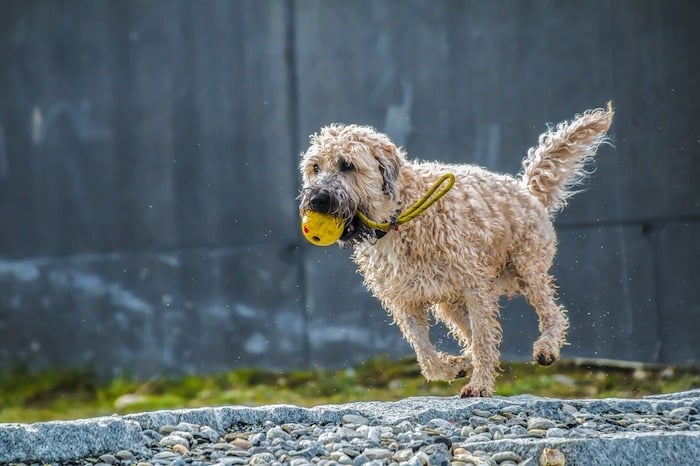
My dog Barley is a great example of a dog that has a naturally high energy level and — because of this — would be more inclined to slip into high arousal states, were it not for the training sessions we’ve incorporated into our daily routine and the plentiful physical and mental outlets I provide him with.
His training helps him think through his excitement and energy to behave like a polite dog, not a crazy combination of nails, teeth, and legs.
Here, we will primarily focus on techniques to help high-arousal dogs, but the principles can also apply to high-energy dogs. Just keep in mind that they aren’t mutually exclusive!
From now on, to avoid confusion, we’ll call all of these pets “hyperactive dogs.”
Both high-energy dogs and high-arousal dogs need training, physical exercise, adequate deep rest, and mental enrichment.
Without giving your dog adequate exercise and mental stimulation, no amount of training will succeed. And without training, all of that exercise and enrichment will just create a super-athletic brainiac of a dog with no manners.
Why Hyperactive Dogs Need An Off Switch: Shutting Down Hyper Behavior
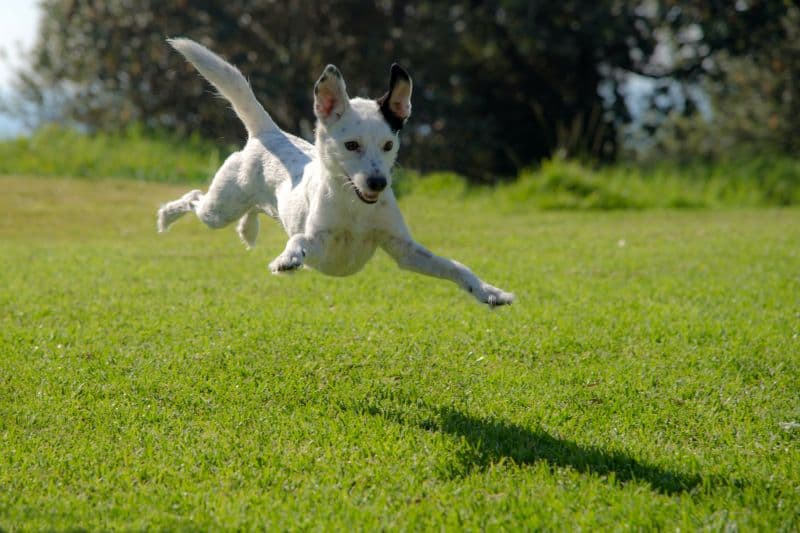
Hyperactive dogs need what trainers call an “off switch.” This means that your goal isn’t just to give them exercise, but to teach them how and when to calm down. This is one of the most important things for calming hyperactive dogs.
We often only work on revving our dogs up, and then we get upset when they don’t seem to know how to relax.
It’s important to understand that dogs don’t naturally know how and when to relax. Without putting some work into training time, there’s no way for your adolescent dog to know that it’s OK to go totally crazy at the park with his buddies, but that he’s supposed to lie calmly on the carpet in the next room when guests are over.
Teaching your dog how to relax and calm down (“installing an off switch”) is an important method for teaching your dog how and when to chill out!
Read on to learn how it’s done.
4 Great Ways to Calm Hyper Dogs (“Install an Off Switch”)
There are plenty of different ways to calm a hyperactive dog. Luckily, many of these “off switch” games are easy to play and involve treats. I recommend doing one of these per day (plus increasing the amount of exercise, enrichment, and naptime you provide your pooch) if you’re dealing with a hyperactive dog in your home.
Game #1: Mat Training
Mat training is my all-time favorite way to teach a dog to settle down. It’s a multi-step process of teaching your dog to lie down on a “mat” and stay there no matter what’s going on around her.
There are several ways to teach a dog to settle down on their mat, but my personal favorite was written by Dr. Karen Overall.
The video above illustrates this game well.
Game #2: It’s Yer Choice
Pioneered and popularized by dog training extraordinaire Susan Garrett, the It’s Yer Choice game helps dogs learn to make choices to get what they want. Your dog learns to look to you for permission to get what she wants. It’s an amazing framework and super-easy game to start playing!
The video above shows K9 of Mine CEO Megan Marrs playing this game with her pooch, Remy.
Game #3: Ready, Set, GO!
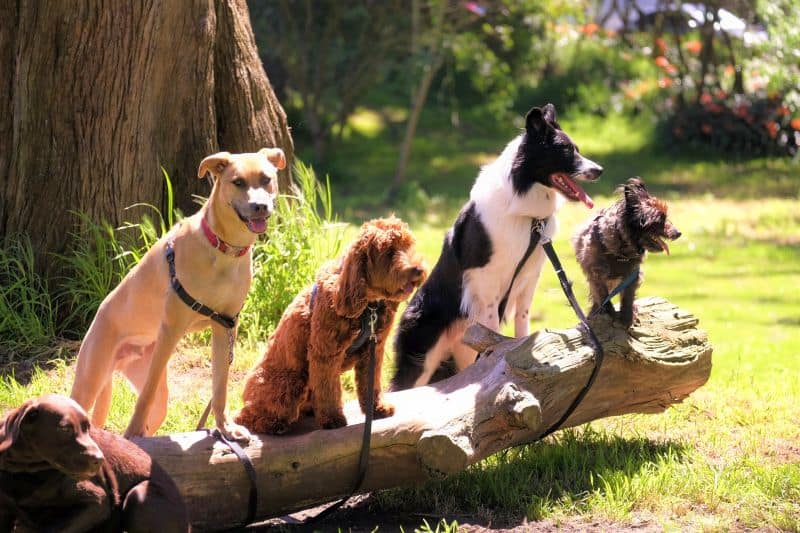
This is one of my dog Barley’s favorite games. Once your dog knows a few basic obedience cues really well, you can play Ready, Set, GO!
Start by revving your dog up. Barley and I play tug, but others might wrestle or chase their dog. Just do whatever gets her all amped up. Don’t get her too riled up on the first try, but you’ll be able to increase the difficulty later.
Start the game by saying, “Ready, Set, GO!” and begin the amp up process. After a few seconds, say, “Ready, Set, DOWN!” or “Ready, Set, SIT!”
Your dog might hesitate or keep trying to play with you — that’s OK. Just become supremely boring until your dog complies.
As soon as she listens to your cue, start the game again by saying, “Ready, Set, GO!” Your dog will quickly learn how to stop playing and respond to a cue as fast as possible. This helps her learn to think even when she’s excited!
Game #4: SMART x 50
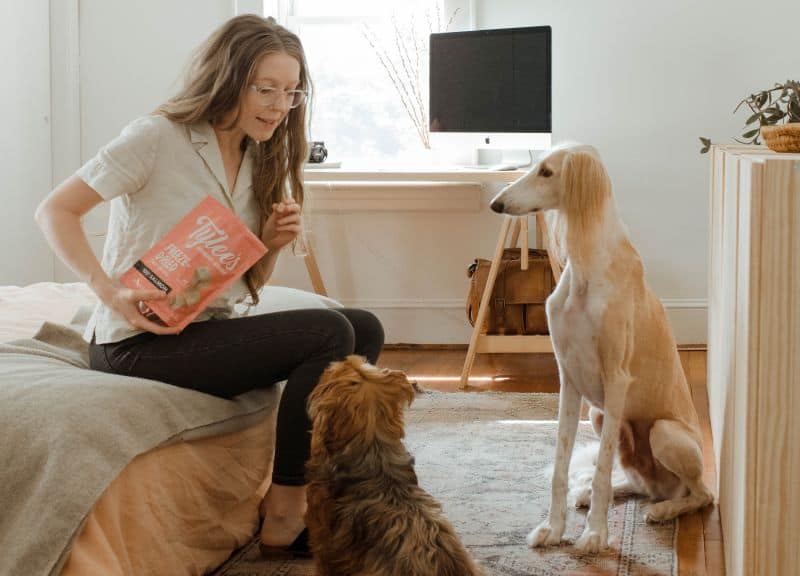
SMART stands for See, Mark, And Reward Training. The “x50” means that you do it 50 times per day.
WOAH — a training method that requires 50 repetitions per day?
Yeah, but don’t worry. It’s super easy.
Here’s how you can implement SMART x50:
- Set a goal. Pick out two or three behaviors you’d like to see more of from your dog. For a hyper dog, we might start with simple eye contact without jumping, sitting, or lying down. Don’t make it too complicated!
- Prepare the rewards. You can often use kibble — just estimate that you’ll need about 50 pieces or so. If your dog isn’t all that into food, count out 50 tasty treats (they should be smaller than a kernel of corn) and reduce his breakfast rations accordingly.
- Set the stage. Set the treats somewhere central and easy to access.
- Pay attention to your dog. Any time you “catch” your dog being good, (you see it) say “yes” or “good boy” (mark), and then reward your dog.
- Rinse and repeat. You’ll quickly start noticing that your dog is deciding to do things that you like — without any input from you. This is the ultimate joy of good dog training: dogs that can make good decisions without your prompting.
It’s pretty easy, really. I love SMART x50 because it helps your hyper dog learn to channel his energy on his own, rather than constantly being corrected or instructed on his next move.
As you get more skilled with SMART x50, you can also incorporate “real life” rewards.
For example, if I notice Barley politely playing with his toy by himself rather than pestering me with the toy, I’ll ask if he wants to play fetch.
His response? “I thought you’d never ask!” You can similarly reward your dog for lying at your feet with some petting or affection — you can move away from food rewards if you pay attention to what your dog likes.
The Importance of Providing Physical Exercise & Mental Activity for Hyperactive Dogs
Dogs come with a wide range of baseline personalities, energy levels, and needs. All dogs need both mental and physical exercise, but their exact needs vary based on their individual idiosyncrasies.
If you’ve got the good fortune of owning both a German shorthaired pointer and a pug, you know that they don’t have the same energy needs. This is why it’s important to consider a dog’s breed before adopting a dog — if you know you don’t have time for daily runs and daily training games, maybe a high energy herding breed isn’t the best choice for you.
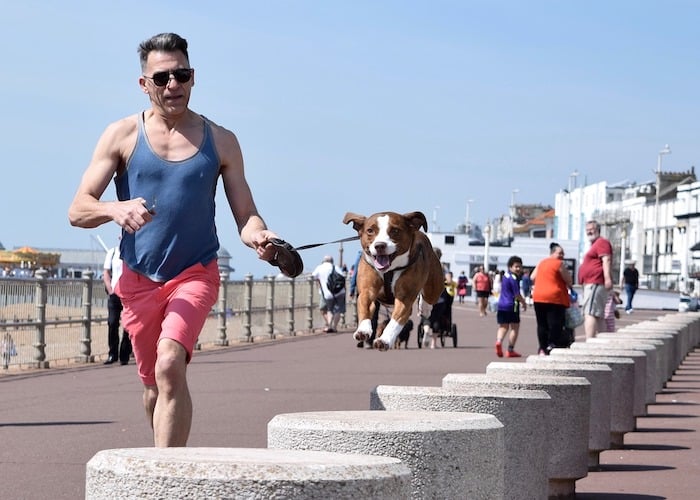
The same applies to mental exercise as well. Even Afghan hounds, which are famously slow-learning, need a bit of a mental challenge every day. That said, be fair and don’t expect your Afghan hound and your border collie to complete the same challenges.
Hyperactive dogs need more exercise and stimulation than the average bear. Wearing them out mentally and physically is also key for teaching your dog the off switch cues mentioned earlier — you’ll never get your dog to chill out if she’s under-exercised and under-stimulated.
As your dog’s caretaker, it’s your responsibility to see that she gets enough mental and physical exercise daily. Whether this means hiring a Rover or Wag walker every day or signing up for canine obstacle course classes, your dog relies on you for opportunities to burn off that excess physical and mental energy.
But what to do if you’ve already got a green-beret-level athlete with Einstein-caliber intelligence in your home?
Create a plan. I don’t have a specific plan each and every day, but my daily goal is to give my super dog Barley at least three different types of mental and physical exercise per day. This helps me stay on track even when I’m working a 10-hour day or otherwise feeling overly busy.
We use a combination of the mental and physical exercises listed below. If you’re more of a strict plan person, then come up with a plan and a goal! Sign up for a 5k with your dog or make it a goal to teach her one new trick per week. This will help you stay on track. Don’t forget to reward yourself at specific milestones, too!
Get Help. If you don’t have the energy of a 23-year-old marathon runner but still own a 3-year-old border collie, it’s OK! Just get help. I used Wag to get Barley a few emergency walks this week when I was laid low by a nasty head cold. Whether you get friends, family, or hired help for daily, monthly, or as-needed help, the extra hands are necessary. It takes a village to exercise a hyperactive dog!
Get Creative. Having a social life and being busy doesn’t mean you can’t exercise your dog. Barley learns new tricks while I’m on the phone, practices mat training while I cook dinner, and gets to play tug during the Game of Thrones theme music. We find little bits of time to make his life more exciting.
Getting your dog enough mental and physical exercise will meet her basic needs. Until you meet those basic needs, you’ll never succeed at calming a hyperactive dog.
Ideas for Providing Mental & Physical Exercise for Hyper Dogs!
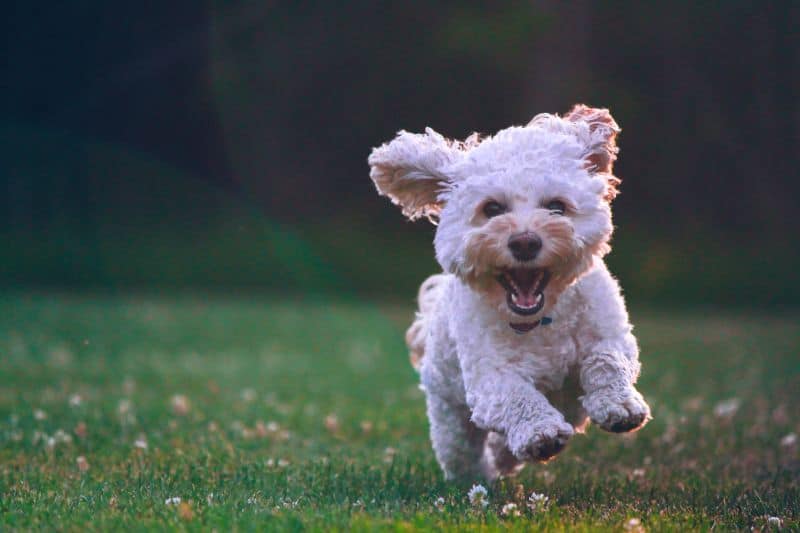
Some of my favorite ideas for mental and physical exercise include:
Tug. Playing tug is a great way to build the bond with your dog and burn some excess energy.
Fetch. If you’re blessed enough to live with a fetch-obsessed dog, use it to your advantage. There are days where I simply don’t have the time or energy for an 8-mile run with Barley, so we just go play fetch instead. He loves it, and it doesn’t exhaust me for the rest of the day!
Flirt Poles. These underutilized toys are amazing. Flirt poles are basically giant fishing poles with a squeaky toy on the end. Your dog will leap, chase, bite, and catch the toy. It’s an amazing way to exercise a dog with just one hand in a tiny space — and your dog doesn’t have to like fetch!
Training Games. Try teaching your dog something new using treats (see our list of the best dog treats for training if you need ideas for high-reward goodies). Training is great mental exercise and is an amazing bonding activity. If you teach your dog things like “up,” “down,” “over,” and “under,” you can even make training into physical exercise! Try some impulse control training games to get started.
Walks. Plain old walks are a great way to wear out your dog. I use my walks as training opportunities to work on leash skills, practice ignoring squirrels, and perfect our sit/down/stay/shake basics in new environments.
Nose Games. One of my all-time favorite games to play with Barley is the “search” game. He waits in the bathroom while I hide tiny bits of hotdog around the apartment. When I let him out, it’s his job to sniff out all of the treats. It’s incredibly easy for me, and is a great mental workout for him. We make it harder by working in larger spaces or even outside! Utilizing enrichment activities like nosework is one of the easiest ways to calm your dog naturally — we’re big fans!
Runs. I love running, but not all humans (or all dogs) agree with me. If you and your dog are new to running, just mix in 2 minutes of jogging at the beginning of every walk. If one or both of you are more experienced, then set a goal of a 5k, 10k, or even a full marathon.
Barley motivated me to complete my first marathon and did almost every single training run with me! We both got into excellent shape and are much closer after those long periods of time pounding pavement together. Just be sure to talk to your vet (and doctor) about any potential medical conditions at play before embarking on something as ambitious as a marathon!
If you plan on running a lot with your dog, consider investing in a hands-free jogging leash and research a bit about canicross — a fun sport that lets owners and their dogs compete together!
Hikes. Off-leash hiking is an amazing outlet for well-behaved dogs. Make sure your dog has an excellent “come when called” response and that the area you’re in allows off-leash dogs. If off-leash isn’t an option, hit the trails with a waist leash or long line leash to keep your dog safe while you both explore nature. Let your dog stop and sniff, eye up the squirrels, and roll in the mud — it’s a huge mental release for your dog to just get out and be a dog.
Puzzle Toys. I would die without my puzzle toys. Maybe literally. Barley has quite the collection of them, and it’s how I keep him mentally engaged when I have no time.
I just chuck his kibble into a puzzle toy, chuck the toy into the crate, and leave them both for the day. It’s not the most bond-building or ceremonious of the exercise options, but — as most pet owners know — life happens. I love my food puzzle toys — and so does Barley.
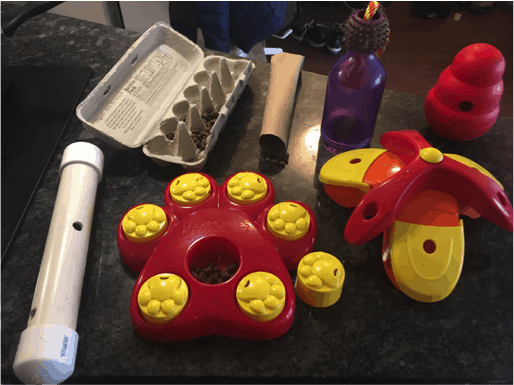
The bottom line is this: if you don’t take care of your dog’s basic exercise needs and give him a chance to burn off some extra energy, you’ll end up with a hyperactive dog on your hands.
And if you don’t teach your dog how to behave in human society, you’ll end up with a rude dog. Use a combination of training, relaxation games, and exercise to calm your hyperactive dog.
Frequently Asked Questions About Hyper Dogs
Still have questions about calming hyper dogs and hyper dogs in general? We’ve got you covered!
What are the most hyper dog breeds?
Most dog breeds that are categorized in the working, sporting, or hunting groups have extremely high energy levels. Huskies, border collies, Belgian Malinois, and pointers are some of the best examples of especially high-energy dogs.
What causes a hyper dog?
Hyper dogs are a product of their environment and their genetics interacting together. But what that really means is that your dog’s energetic needs are not being met by your current routine.
What are the least hyper dog breeds?
Some companion breeds have reliably low energy levels, such as Pekingese, pugs, and Havanese. That said, when they’re young these breeds all still have plenty of energy!
Can medications calm a hyper dog?
It’s considered unethical to sedate a dog rather than meeting his energetic needs with sufficient exercise, enrichment, and daily activity. However, some hyperactive dogs may benefit from working with a veterinary behaviorist if they are incredibly high-strung or anxious in addition to having high energy levels.
What age do hyper dogs calm down?
This varies widely from dog to dog. My 8-year-old Border Collie still fetches, runs, and skis alongside my 14-month-old puppy; so don’t expect energy levels to diminish just because your dog is now 2 or 3 years old.
***
Do you have a hyperactive dog? How do you calm his crazy energy? What kind of hyperactive behavior does he display? Does he exhibit a particular unwanted behavior or does he do different things at different times?
Share your thoughts in the comments!
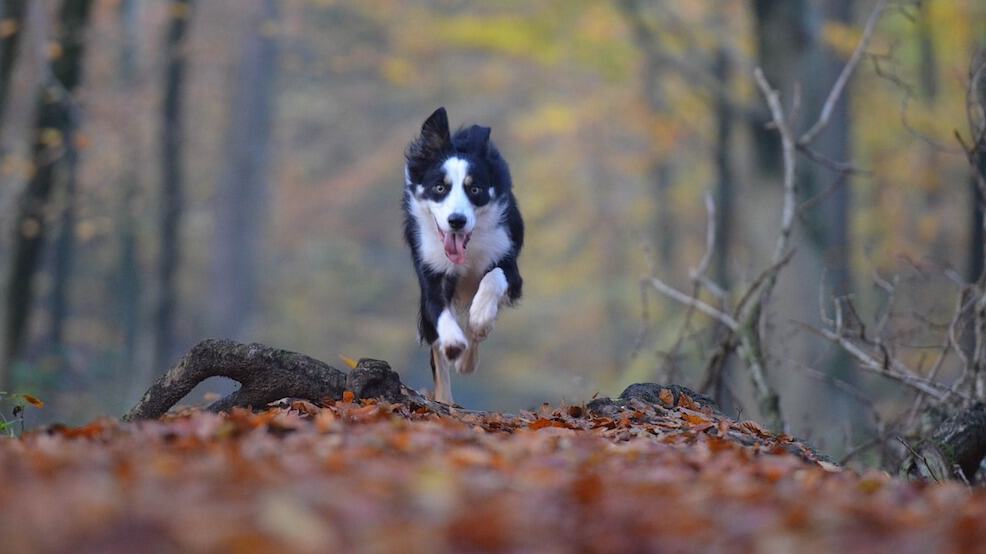

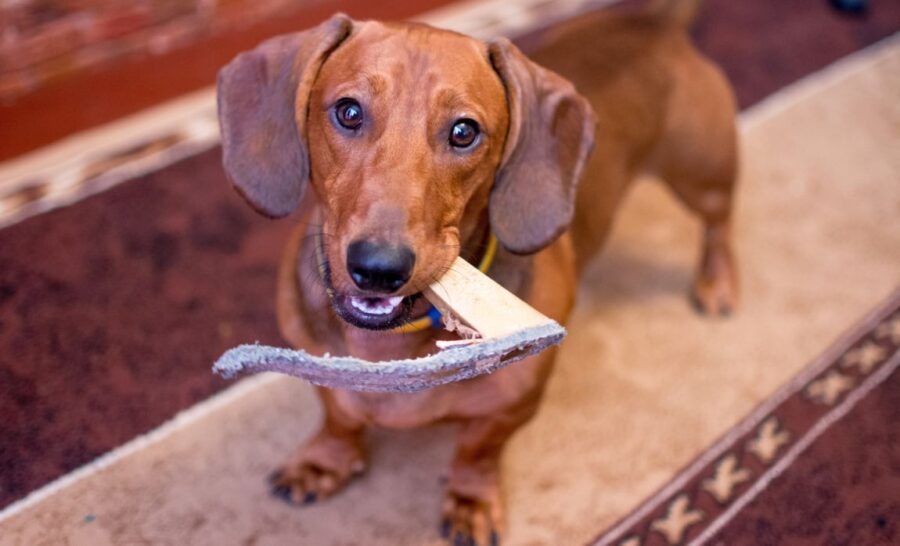


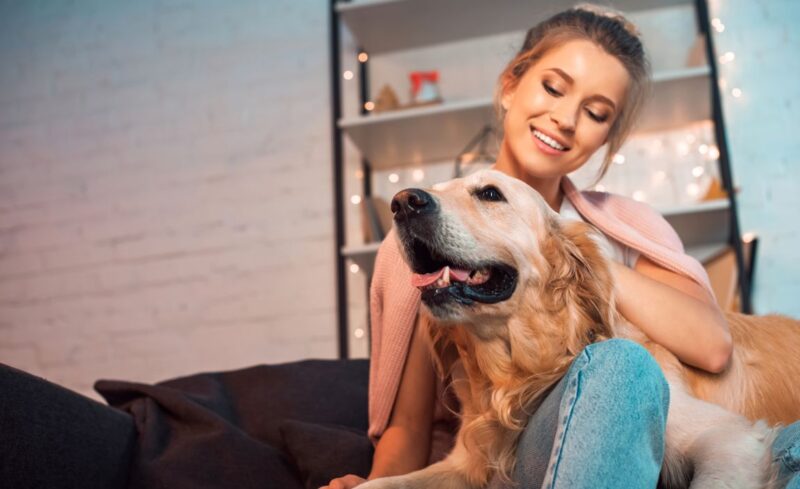
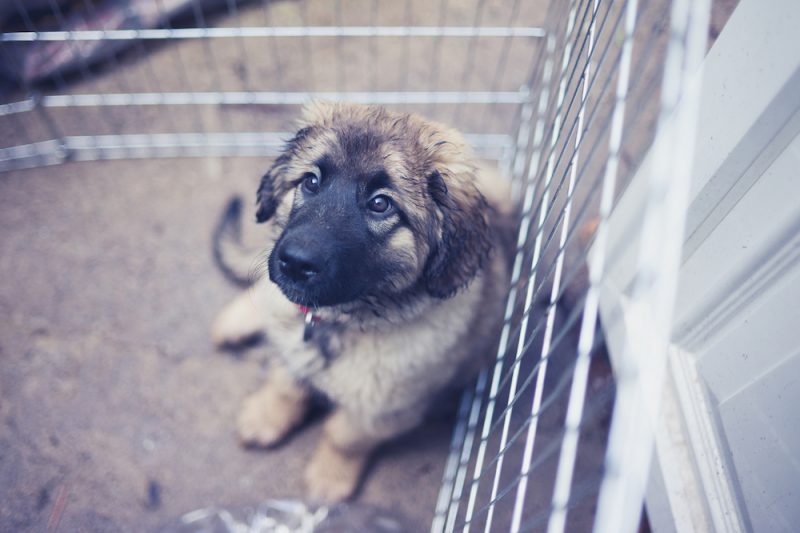
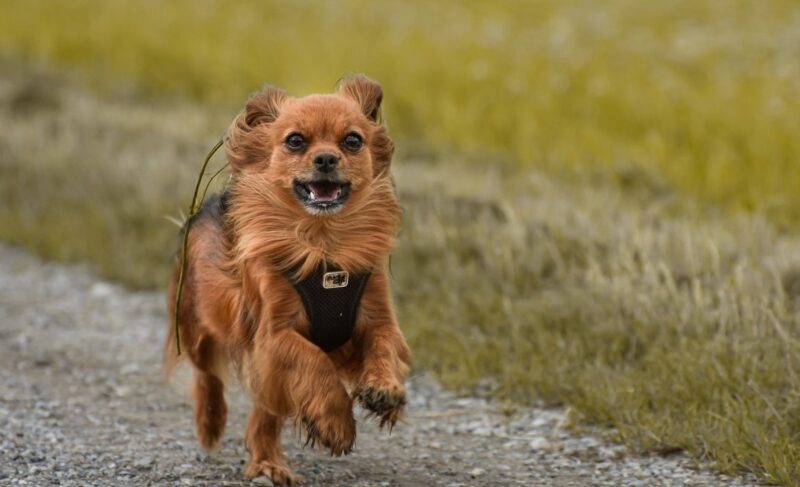
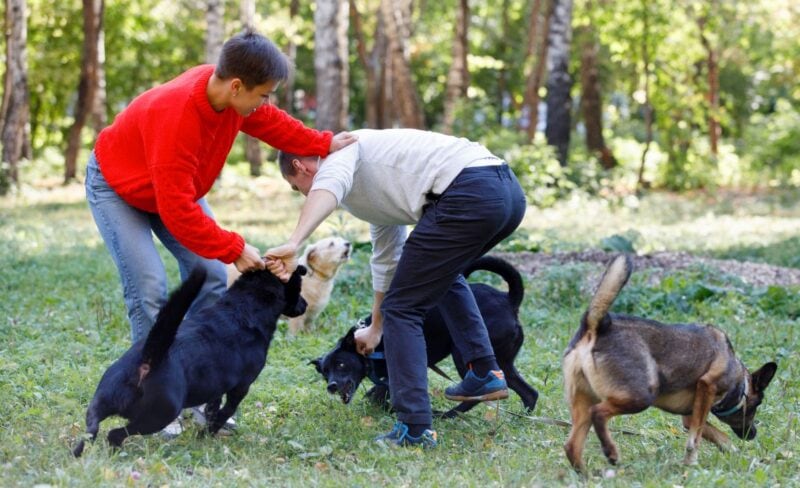
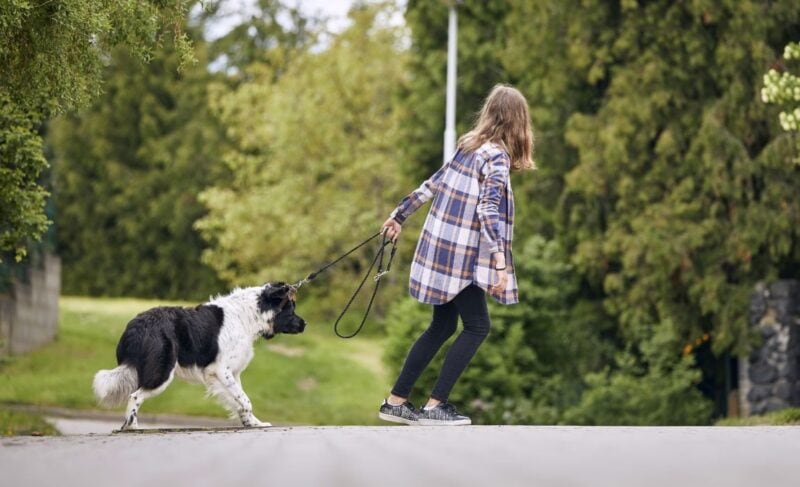
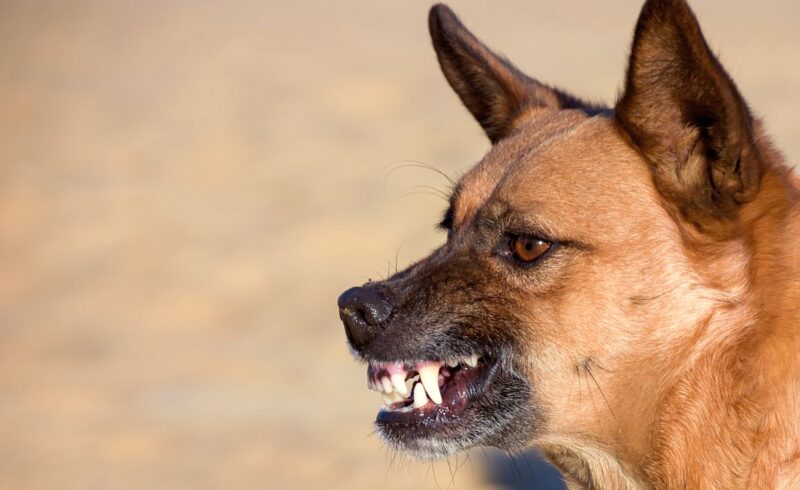
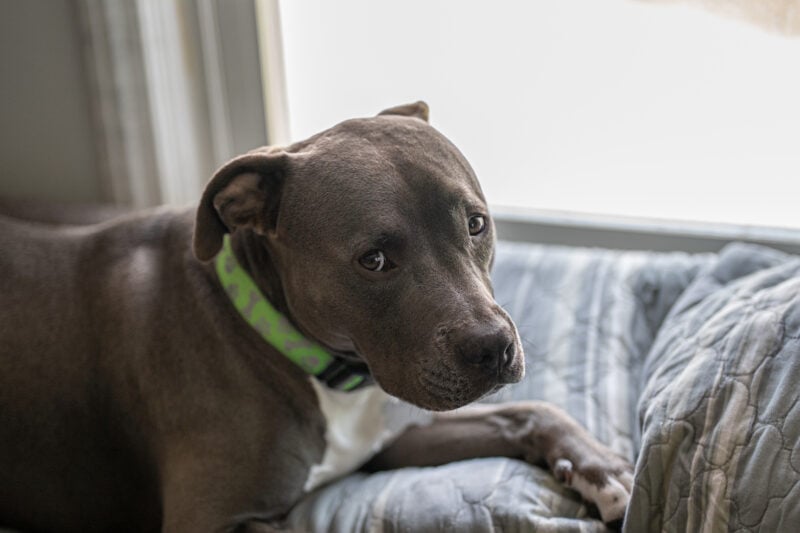

Leave a Comment